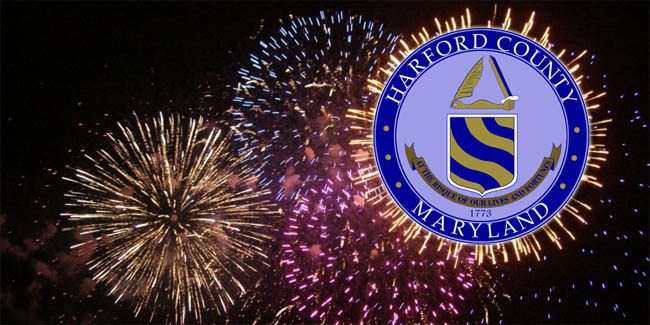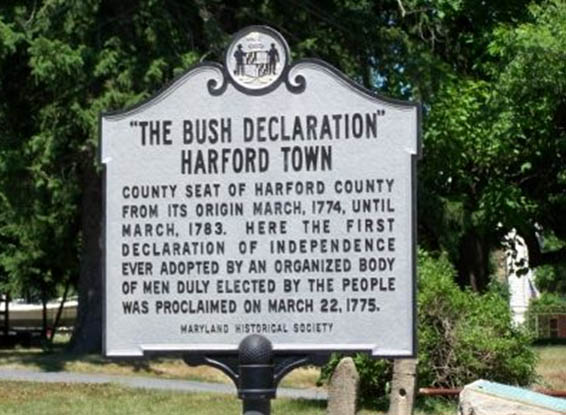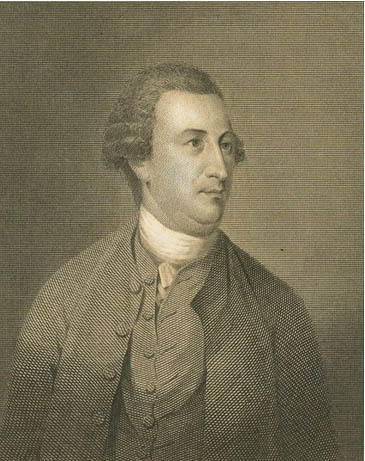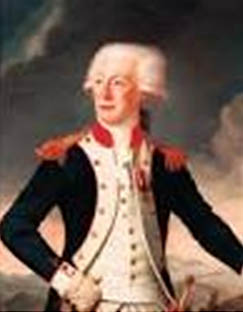
Independence Day, commonly known as the Fourth of July, is a federal holiday in the United States commemorating the adoption of the Declaration of Independence on July 4, 1776, declaring independence from the Kingdom of Great Britain (now officially known as the United Kingdom). Independence Day is commonly associated with fireworks, parades, barbecues, carnivals, fairs, picnics, concerts, baseball games, family reunions, and political speeches and ceremonies, in addition to various other public and private events celebrating the history, government, and traditions of the United States. Independence Day is the National Day of the United States. This is a very special holiday for the nation, but the contributions of local citizens to this effort should be celebrated as well.
In 1774, just as Harford County was established as a separate entity from Baltimore County, King George III approved the “Intolerable Acts: closing the Port of Boston, outlawing meetings in Massachusetts without royal approval, permitting the Royal Governor to remove trials to England and requiring citizens to quarter Royal troops.” The Act enraged the colonists and led to the First Continental Congress which met in Philadelphia and appointed twelve delegates to petition King George for relief. At home on June 11, 1774, several Harford County citizens met in Bush, the county seat at that time and adopted a resolution pledging support and aid to the people of Boston. A few days later county representatives including John Love, Richard Dallam, Thomas Bond, Benedict Edward Hall and Jacob Bond attended the Maryland Convention in Annapolis. The Convention agreed to provide relief to the people of Boston and funds to purchase ammunition for the defense of “Lives, Liberties and Properties.” As directed by the Maryland Assembly, the county established a War Committee with Aquila Hall as treasurer and began collecting contributions. The Congressional petition was ignored by the King and the colonists grew ever more frustrated. On March 22, 1775, thirty-four citizens from Harford County signed the Bush Declaration supporting “opposition by arms to the British troops.” The Declaration also provided the county motto “at risqué of our lives and fortunes.” On April 19, 1775 the American colonies entered into war with Great Britain, a war that would last until 1783 and change the world forever.

Figure 1: Local citizens showed their support for the War of Independence by signing the Bush Declaration in March 1775.
The Continental Army formed in June 1775. Eventually approximately 3,600 Harford County citizens served as officers, soldiers, seaman, marines, militia or minutemen. Among the most prominent of these was William Paca, who helped establish state and national policies.

Figure 2: William Paca was born in Abingdon. He was very influential during the War of Independence and went on to become Maryland’s third governor.
War plans were actually developed locally through the War Committees. For Harford County this was done at Bush. The Committee required all freemen 15-60 years of age to organize themselves into companies with a minimum of 68 members. Each company was to select a captain, two lieutenants, an ensign, and four sergeants and to muster once a week until full membership was obtained. Harford’s troops soon headed for battle in New York fighting on the Hudson River at Fort Washington. For those not engaged in the actual fighting, the war effort took a different turn. Joppa and Otter Point began constructing wooden ships and local furnaces provided iron needed for weapons and ammunition. On July 4, 1776, the Continental Congress in Philadelphia approved the Declaration of Independence and the British responded by expanding the war effort. Until this time, there was still the possibility that the colonies would remain a part of the British Empire.
In the fall of 1777, the British fleet came up the Bay and attacked the village of Joppa but locals were able to repulse the attackers. Throughout the war years, it was not unusual for our future “Founding Fathers” to pass through Harford along the Post Road (what is now MD Route 7), en route from Virginia to Philadelphia and to stop at Bush to inform local leaders about the war effort.

Figure 3: The French troops led by General LaFayette traveled through Harford County on their way to the Battle of Yorktown in Virginia
As the war shifted to Virginia, American and French troops had to move southward through Maryland, crossing at the ford and ferry at Bald Friar and the ferry at Susquehanna Lower Ferry (later known as Lapidum). These locations provided ideal although difficult crossings for troops and war supplies. The largest recorded troop movement was the army of 6,000 French soldiers commanded by Count de Rochambeau which crossed at Susquehanna Lower Ferry on September 9, 1781 to join with Washington and Lafayette in Virginia. The French Army camped by the side of the Post Road just south of Susquehanna Lower Ferry.
Earlier that year in April, General Lafayette and his forces crossed the river at Bald Friar and camped at the Rigbie mansion near Berkley. While there, General Lafayette and his officers quelled a potential mutiny. The troops were tired, poorly clad, ill-fed, without proper shoes, without pay for many weeks and traveling southward, farther from their homes. There had recently been an alarming number of desertions from their ranks. Yet the troops went on by way of Trappe Church to Churchville, Bush and southward to join in the eventual defeat of Cornwallis at Yorktown.
The war for independence ended with the signing of the Treaty of Paris on September 3, 1783. Now all of the troops could return home and continue the amazing feat of building a democratic republic.
For those interested in further research about the county in the War of Independence or in viewing the actual Bush Declaration, consider visiting the Historical Society of Harford County, Inc., 143 N. Main Street, Bel Air, MD.



That’s “at the risque of our lives and fortunes”; risqué is something else altogether. It’s the archaic British spelling of the work “risk.” I guess it got thrown by your spellchecker. I’m reminded of something that appeared about three decades ago in the APG News (is that even still in print?), where someone quoted the preamble to the Constitution, which includes the phrase “provide for the common defence,” using again the British spelling. However, that isn’t what appeared in print. A proofreader, not recognizing the quote, “corrected” the British spelling of “defence” to the American “defense.” A later editor, recognizing the quote, indicated by way of a standard proofreading mark that the original construction was to be used. Apparently, however, the typesetter wasn’t up on proofreading marks, because it made it to print as “provide for the common stet.”
I’m reminded of the definition of the term “pedantic.”
This is amazing material, and yet you’re focusing on spelling? Why?
The pedantic comment gave me a real laugh.
To the author, Carol Deibel:
I’ve been a national journalist with major new stand publications for 20 years. This was a fantastic summary. Thx.
Many thanks to Ms. Deibel for her timely and accurate account of some of the activities in Harford County during America’s War for Independence. Special thanks to her for placing the 1775 events at Bush in the correct historical context: an expression of support for the American cause and in no way a call for independence. Someday (the sooner the better) we’ll have to have the State and the Maryland Historical Society erect an historically accurate road sign.
Thank you Mrs. Deibel.